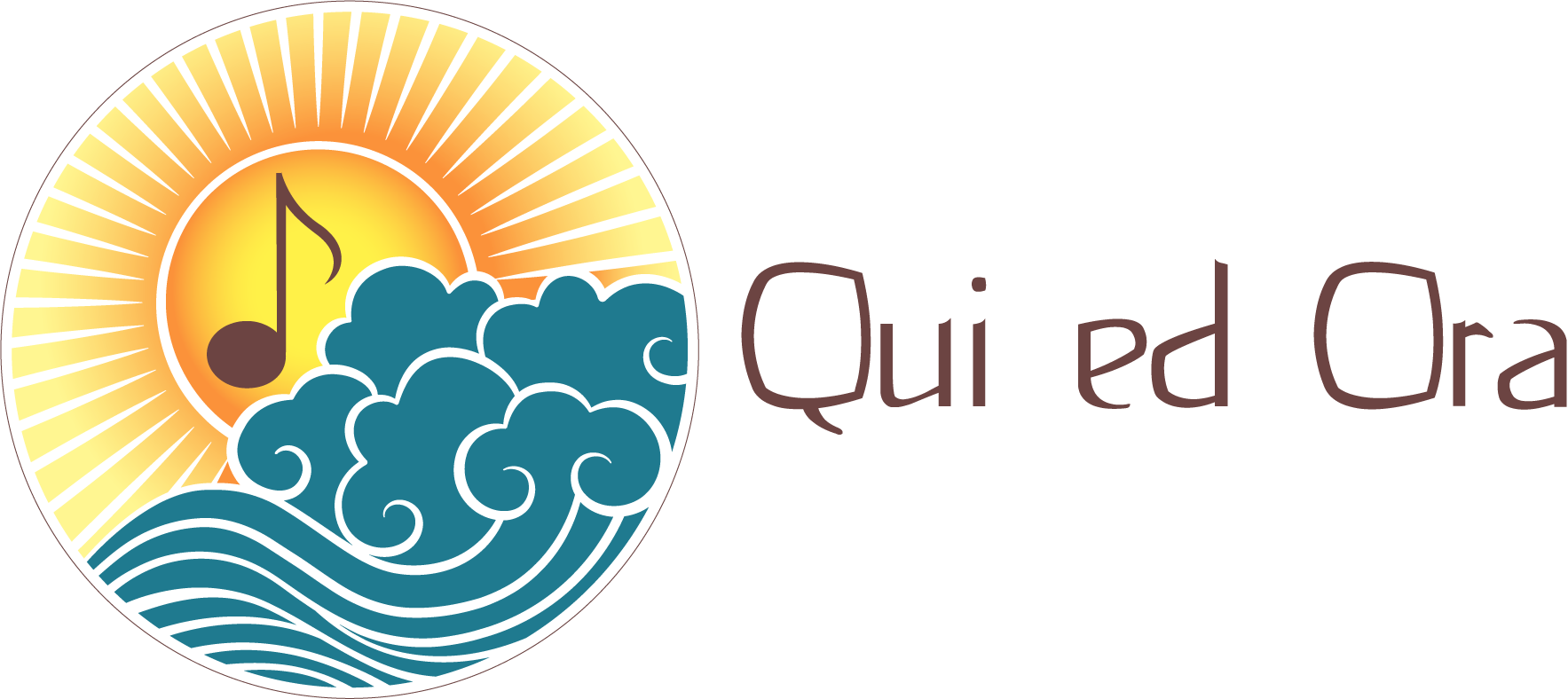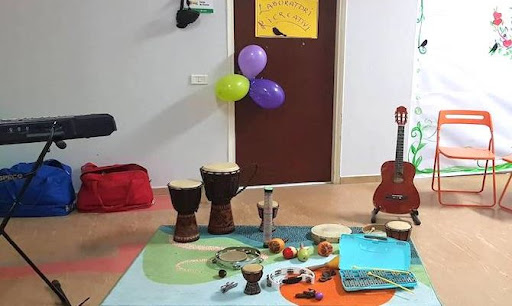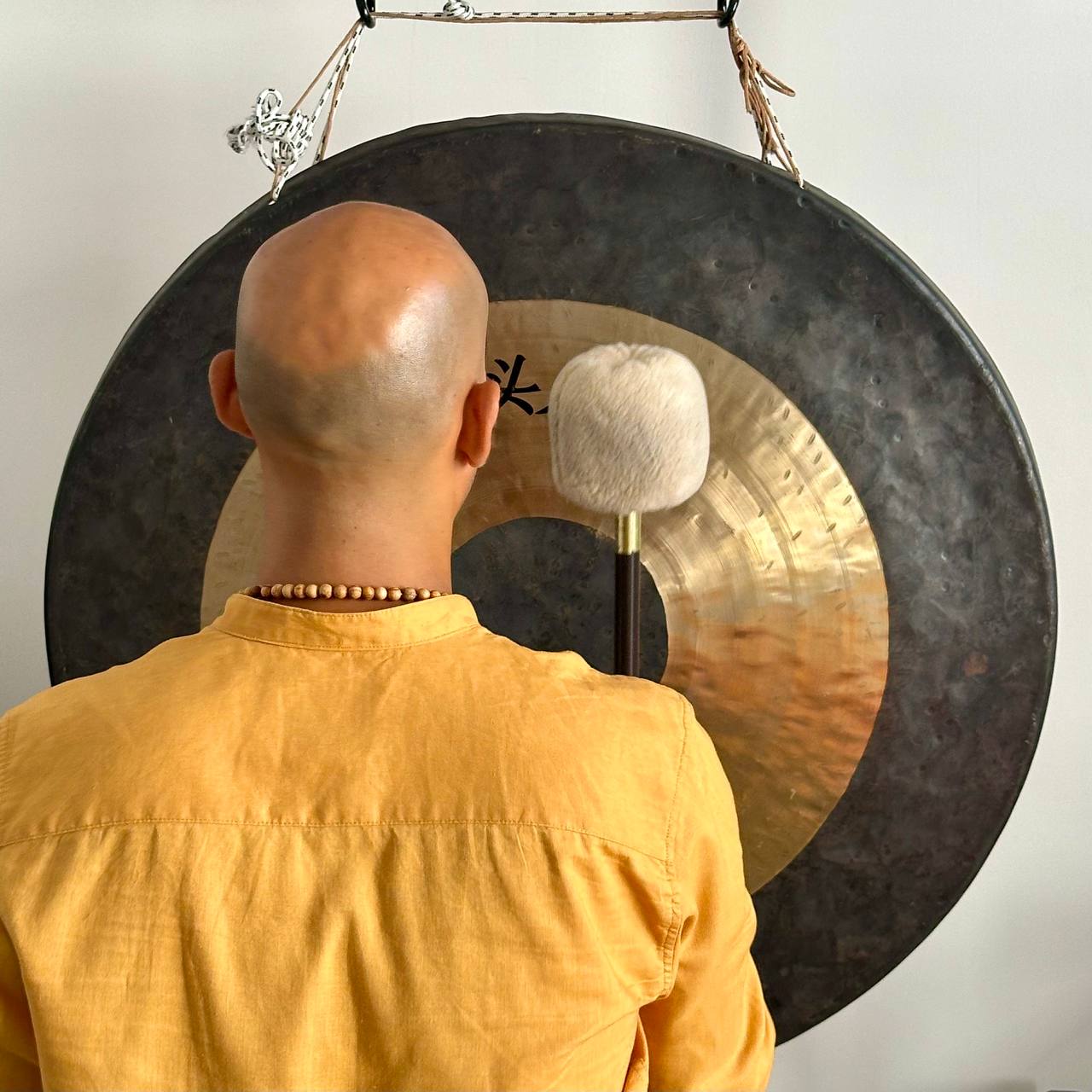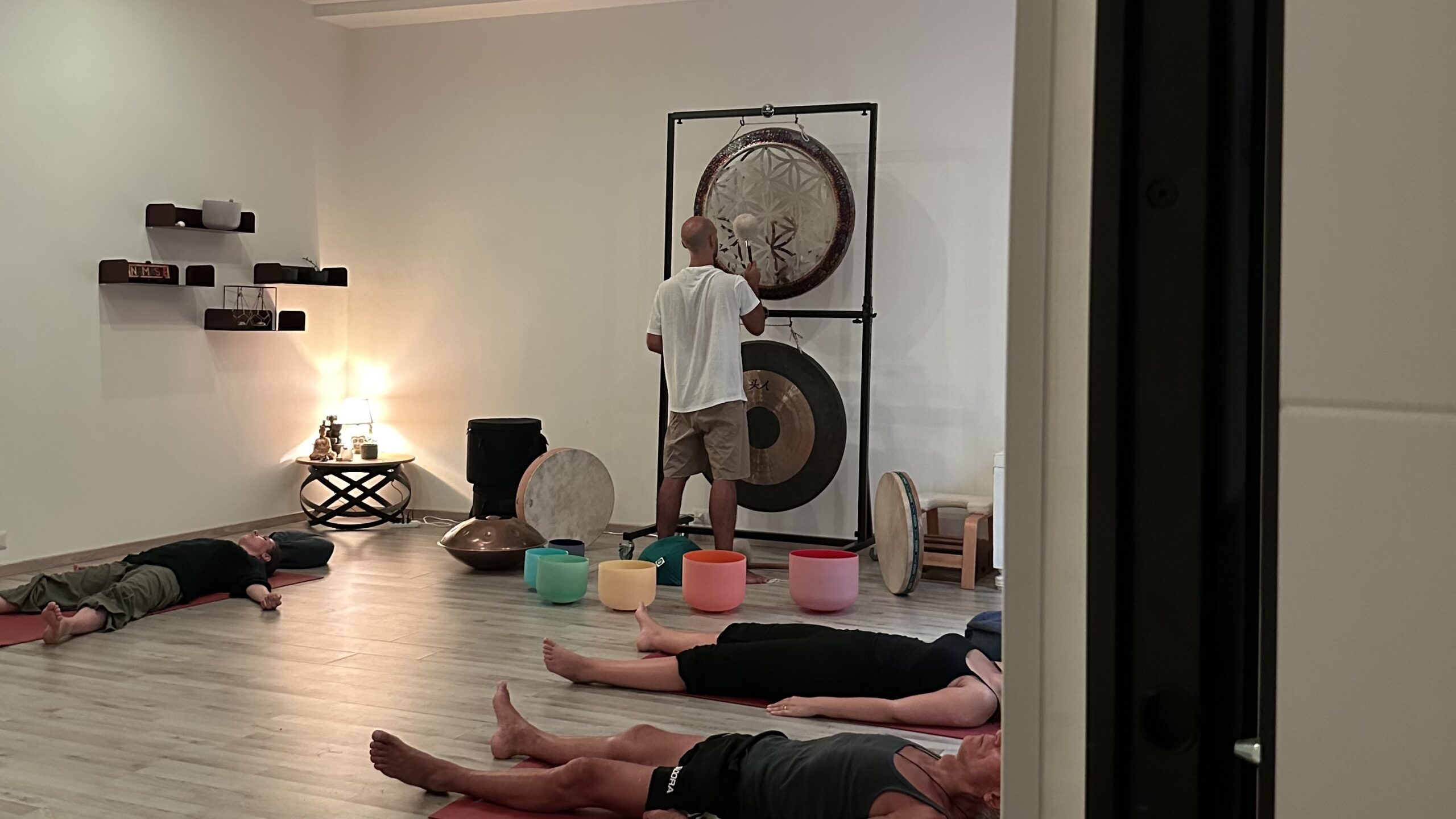The disabled person is often unable to assimilate life’s experiences, may feel confused because they misinterpret them, may misunderstand them, may have little or no faith in the capacity of their own psyche. His responses to life may be distorted by fear or anxiety; he can live in a whirlwind of emotions or, conversely, his conscience can only be interested in fragments of reality.
For the affectively immature or disturbed person, the experience of the emotional language of music is inviting: the very existence of melodies gives him security, induces him to use his own body or voice expressively. The rhythmic-melodic structures thus become a support for his activities, an order that favors the control and coordination of movements, as well as a basis of experience for the development of his personality and for its integration, both individual and social. Of these potentials music therapy provides a testimony that comes from more than ten years of activity. To those who experience it, it communicates the same human charge of understanding and enthusiasm, which accompanies them in a profound and engaging experience.
There is a lot of research that shows that music is very motivating for children, (especially for those with disabilities) – explained Dr. Kate Williams expert in music therapy and disabilities at school >– and it is very rare to find a child whose attention is not captured by music. Music and the brain work well together, and stimulating rhythmic areas of the brain can stimulate motor responses and reflexes; there are also the connections in the brain between music and language. Much of this research has been done with adults, but the same is true for the disabled.” This approach represents a fundamental help because he suffers from motor and cognitive disabilities.
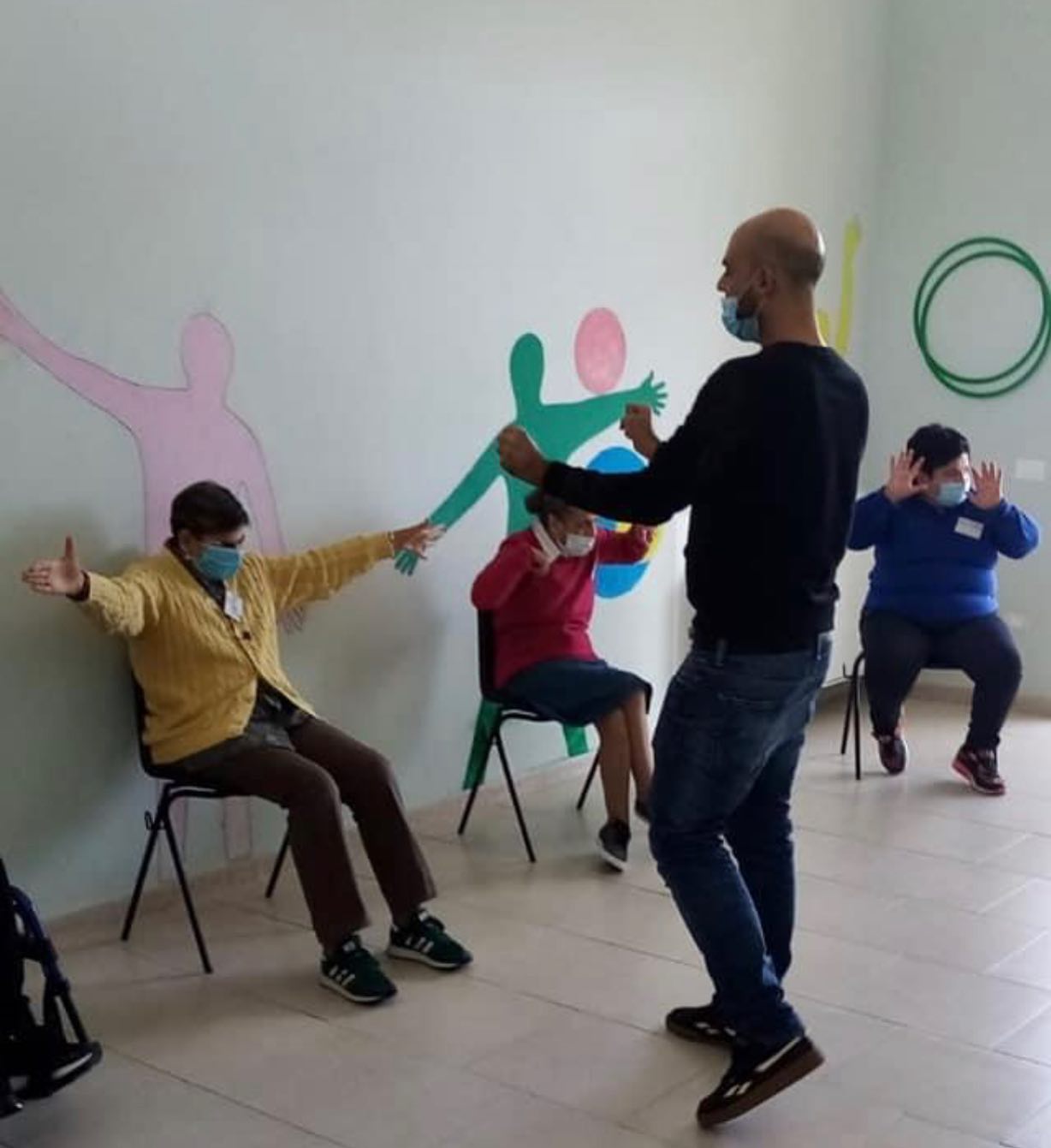
HOW A WORKSHOP OF MUSIC THERAPY FOR THE DISABLED IS CARRIED OUT
The setting of the laboratory activities aims to propose significant situations and actions, possibly attractive and captivating, capable of arousing curiosity, interest and motivation. Particular attention is paid to the responses and attitudes observed/received both by the individual and by the group, which serve as a reference for the construction of functional and adequate proposals for the therapeutic objectives. The stimuli suggested by the patients are necessarily valued, enriched and expanded through the reciprocity between the music therapist and the patient himself. The activities tend to involve all the senses, imagination, movement, emotion, cognitive functions, through the fundamental use of all the potential of musical language and its mixing with the use of the body: from singing to listening, from the sound of musical instruments to dance, resorting on certain occasions also to the use of other artistic mediators such as colors, poetry, fairy tales in music, rhythmic movement. The outcomes are valued as elements of a process, both at a relational and musical level, regardless of their aesthetic value, because they are always capable of creating an emotional and/or empathic relationship both between therapist and user and between user and user.
Through active and receptive techniques, which I suggest you read more in the article What is Music Therapy and how to practice it, each meeting is conceived as sound-musical and relational time and space in which, once the basic coordinates have been fixed (represented by musical activities), situations occur, meetings take place, relationships are created, energies move. It begins with musical proposals (listening to recorded music) that tend to be calm and relaxed, characterized by slow rhythms and relaxed melodies, accompanied by guided breathing exercises and slow movements, with a limited spatial use of the environment, marginal emotional/affective involvement, sometimes resulting in apathetic or even dysphoric symptoms; this beginning has the purpose of favoring the muscle awakening from the state of quiet and the contextualization of the moment.
The music workshop for the disabled continues with increasingly activating musical experiences through the use of percussion instruments, the execution of rhythmic or dance sequences, instrumental improvisations and various forms of orchestration, in which agogics and rhythm progressively assume an increasing role until they determine the fulcrum of the intervention in their climax, stimulating in the patients an increasingly engaging action at an energetic, physical and emotional level. The person is invited to get involved by appropriating the music through the movement of all parts of the body, both in a sitting and standing position.
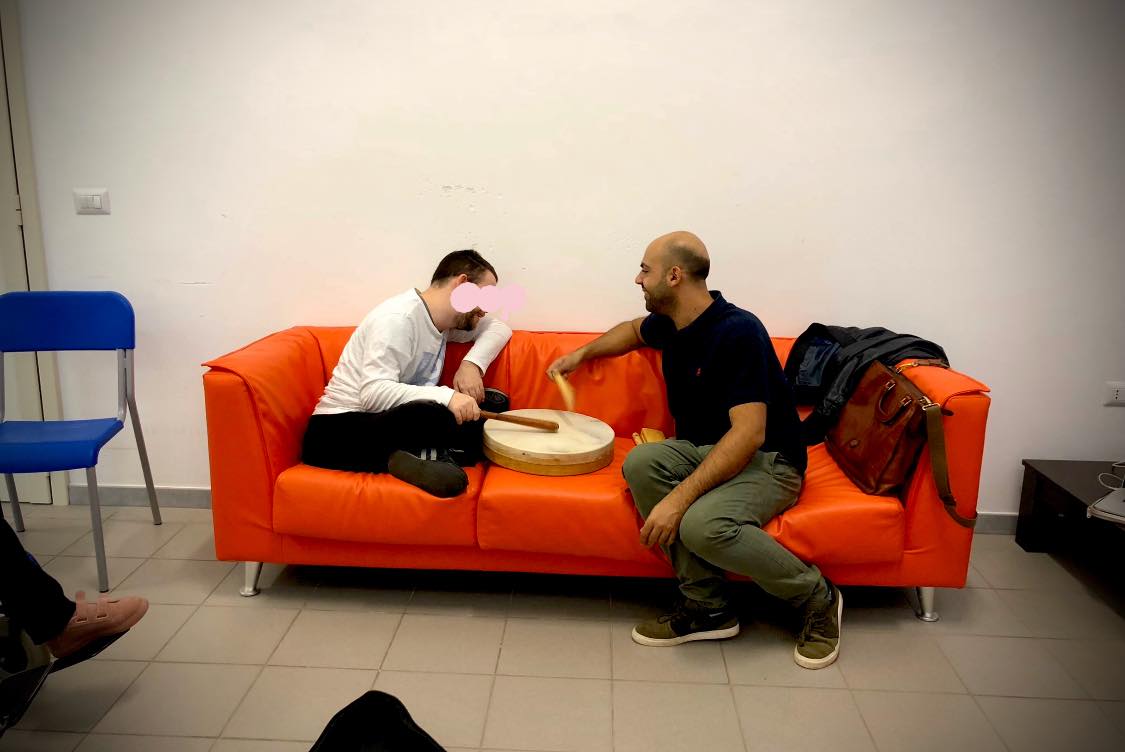
BODY PERCUSSION AND DISABILITY
Another fundamental technique in the laboratory is body percussion. This type of activity favors the inclusion of everyone, even people with severe motor and cognitive disabilities who, being able to make music and work at the same level as others, have positive effects on group dynamics. This technique allows you to experience musical elements such as pulse, rhythm, metrics of words, speed directly on the body. It also goes to implement motor coordination, attention in reproducing the proposed gestures, awareness of one’s body and also allows a process of socialization among the members participating in this activity.
The activity ends with a return to the calm climate and initial relaxation to recover a balanced emotional state, which favors the relational dimension with oneself and with family members.
THE COUNTLESS BENEFITS OF MUSIC THERAPY
If the benefits of music therapy in the treatment of disabilities are innumerable, no less important is music for the parents of children or disabled people. Living with disability is a challenge that characterizes the life of parents, who are forced to fight every day. Fight against disease, prejudice, discrimination, exclusion and who knows what else. All of this is a continuous source of stress, which can be fought, or at least stemmed, with music therapy. In discouraging situations or during particularly stressful periods from an emotional point of view, music always plays a prodigious anti-stress role. Indeed, listening to particularly relaxing pieces of music acts on the neurochemical areas of reward, stimulus, stress and excitement.
We can therefore conclude by affirming that Music Therapy, when proposed by qualified professionals, proves to be an effective tool suitable for all types of users, not only to stimulate and bring out emotions but also to facilitate motor skills and enhance cognitive functions through the stimulation of creativity.


